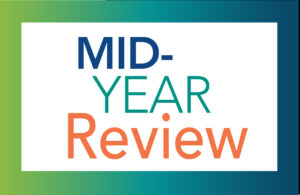As we approach the mid-way point of 2022, we decided to look back at the year – unpacking some of the reform trends we’ve seen so far and exploring what they may indicate about the future of legislative police reform efforts.
 This year’s legislation concerning police reform has, so far, been something of a departure from the previous two years – both in terms of pace and the subject of enacted bills. We’re seeing legislation take a more deliberate path forward after an initial flurry of legislation in 2020 and 2021 tackling hot-button issues like restraint tactics and duty to report. This more deliberate approach is reflected in legislation and funding priorities that emphasize mental health, both in law enforcement and in the larger communities they serve. Additionally, a waning “defund” movement has ceded ground to the notion that police need more resources, not fewer, to fulfill their duty to their communities amid rising crime and greater need.
This year’s legislation concerning police reform has, so far, been something of a departure from the previous two years – both in terms of pace and the subject of enacted bills. We’re seeing legislation take a more deliberate path forward after an initial flurry of legislation in 2020 and 2021 tackling hot-button issues like restraint tactics and duty to report. This more deliberate approach is reflected in legislation and funding priorities that emphasize mental health, both in law enforcement and in the larger communities they serve. Additionally, a waning “defund” movement has ceded ground to the notion that police need more resources, not fewer, to fulfill their duty to their communities amid rising crime and greater need.
Deliberate Reform Trends
The pace of reform-oriented legislation has noticeably slowed in 2022. As of this writing, 125 bills have passed in 2022 – compared with 366 In all of 2021. Notably, policy changes required by many of these new laws are comparatively minor as opposed to the sweeping changes seen in policing operations in late 2020 and 2021. With the most urgent public concerns largely addressed in previous legislative sessions, policymakers are turning their focus to some of the more fundamental issues in policing.
A significant portion of state-level legislation enacted in 2022 expands mental health resources for officers and agencies, both in direct support to officers and setting funding priorities for community mental health resources like crisis intervention teams. To replicate the demonstrated success of department-based peer support programs, South Dakota, Louisiana, Texas, and Indiana have passed laws in 2022 that provide funding for these programs. Research shows that peer support is consistently among the most effective tools to help officers with the daily stresses of their work and in processing traumatic incidents that may occur while on patrol.
The ‘Defund’ Question
Many in law enforcement have been closely following the political and cultural debate around “defunding police” that emerged immediately following several high-profile incidents in 2020. The notion that outcomes related to crime and policing could be improved with less funding seems to be on the wane in 2022 amid a rise in crime rates seen in many parts of the country. In fact, in many cases, elected representatives and municipal officials are requesting and approving increased budgets to confront an uptick in crime rates.
Public opinion is certainly a factor in the pushback against reducing law enforcement budgets. A survey from the Pew Research Center showed a swing in public sentiment around police funding in 2020, with a majority of respondents stating police budgets should either remain the same or be reduced. When posing the same question a year later, researchers noted another swing in public opinion, this time with survey results indicating across-the-board increases, in some cases double-digit increases among certain demographic groups, in support of increased police funding.
Adding to the urgency for increasing police budgets to tackle rising crime is a consensus forming around a school of thought that believes reversing rising crime rates is a crucial component in the “return to normal” from the pandemic’s peak. Increased crime rates, especially in urban public transit systems, are thought to be a significant barrier to returning to a pre-pandemic way of life in cities. At the federal level, policymakers are urging state and local governments to devote federal pandemic relief funds to law enforcement.
Revisiting Enacted Laws
Roughly two years from the rush to pass reform legislation, especially laws addressing restraint tactics and reporting, there is an early indication that some of these laws may yet be subject to reconsideration or revision. In March of 2022, the governor of Washington state signed HB 2037, which clarifies that police can use force to stop a subject from fleeing temporary investigative detention. Elsewhere, changing political realities are leading to the expectation that new administrations may revisit other state-level police reform laws. Lastly, legal challenges to state-level police reform levels, such as one recently filed in Colorado. Indicate further challenges to these laws may lay ahead.
While it is difficult to “read the tea leaves” of political change and legal challenges, there is evidence that the push for reform over the last two years will continue to be revisited as experience and research add to the understanding of the effectiveness of these legislative efforts.
Though the pace of reform legislation has slowed compared to previous years, it is a mistake to believe that the reform trends are becoming less impactful. On the contrary, efforts to provide mental health and peer support funding are vital to addressing the root causes of burnout and fatigue among law enforcement officers, contributing to adverse events. Furthermore, there seems to be an early indication that legislators are interested in revisiting previously passed laws to improve them by balancing the need for public safety and trust with officer readiness and effectiveness.